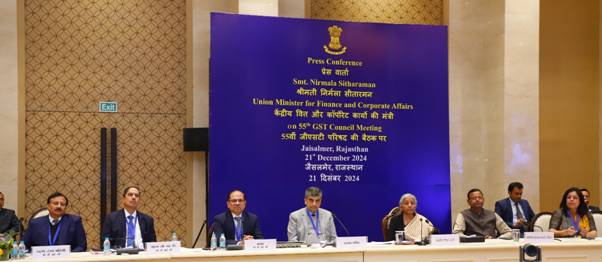Illustration: Binay Sinha
The government has begun getting rid of old outstanding small income tax demands after setting a ceiling of Rs 1 lakh per taxpayer. Taxpayers can check the status of the demands by logging on to the income tax portal online. The scheme will be implemented by the Bengaluru-based Directorate of Income Tax (Systems) at the Centralised Processing Centre (CPC), preferably within two months. It will be limited to Rs 1,00,000 per assessee.
During the interim budget, Finance Minister Nirmala Sitharaman had announced that the I-T department will withdraw small outstanding direct tax demands of Rs 25,000 or less which pertained to the period up to FY10 and of Rs 10,000 or less for the financial years from 2010-11 up to 2014-15.
Following the Finance Minister’s announcement, the CBDT has now released the order pertaining to the said waiver. Key points are:
a. The waiver of demand shall be for any demand outstanding as on January 31, 2024 under Income Tax, Wealth Tax or Gift Tax.
b. Demands upto Rs. 25,000 for the period pertaining upto Financial Year 2009-10 and upto Rs. 10,000 pertaining for Financial Year 2010-11 to Financial year 2014-15 will be eligible for the waiver. This includes interest, penalty and cess and the whole outstanding demand would be waived off as long as it is below the threshold.
c. However, the total waiver upto a maximum of Rs. 1,00,000 would be waived off per taxpayer(PAN). If the aggregate of all demands outstandng for a taxpayer or an entity exceed Rs 1,00,000, then the waiver would be limited to eligible demands totalling to Rs 1,00,000 or less. The rest of the demands would continue.
d. No refund can be claimed against the demands which are being waived off.
e. The waiver will be automatically applied by the Income Tax Department’s Central Processing Cell (CPC) without any intervention required by the taxpayer. The process is likely to be completed within 2 months.
f. A taxpayer can log on to the Income Tax Portal and go to outstanding demands and see the status of the demands. If any taxpayer still sees any demand outstanding, it can reach out to the CPC to extinguish/waive the demand from the portal.



The move would help the assessee to the extent they fall within the limit as under:
1. As a rule under tax laws, if there is any pending tax demand, any refund in the subsequent year will not be processed unless such demand is being disposed of. So by disposing of the demands, many refund claims which otherwise were stuck will be expedited and released.
2. The interest and penalty accumulating on such matters for so long will be automatically waived and it is a big monetary relief.
3. A big dispute resolution amnesty scheme for the tax-payers
How does the taxpayer gain?
“The order will be a significant relief to the taxpayer. A lot of the taxpayers had last year recieved demand notices for decades old liability which they were completely unaware. The notices had come as a surprise as no reminder/follow up had been undertaken by the tax authorities to recover those demand prior to these notices. The biggest challenge was that there was no mechanism with the taxpayer either to validate if the demand is correct or not since most of them had not maintained any records for that period. Now, the taxpayer will be saved from the unnecessary harassment over such petty demands while the tax department will also be able to focus its effort on other demands
Out of these, 2.1 crore cases have a demand of up to Rs 25,000. While these include demands dating back to 1962, about 58 lakh demands were eligible for the relief up to the financial year 2009-10. The waiver proposed for the period 2010-11 to 2014-15 involves another 53 lakh demands.
Taxpayers had been spooked by demand notices to settle very old tax demands or proposed to adjust current tax refunds against old dues that go back to 2003 and the relief would benefit those taxpayers who have mismatches in taxes paid but the department or taxpayer himself does not have the records to prove it.
“Individuals are unlikely to have assessment details before 8 years and therefore the removal of these demands was neigh impossible. To make matters worse the department itself did not have readily accessible records for these far back periods leading to overloading of the administrative system for what would otherwise be small demands. The decision to waive off small demands below the defined threshold makes life simpler for both the taxpayer as well as the tax department,”
Visit www.cagurujiclasses.com for practical courses











